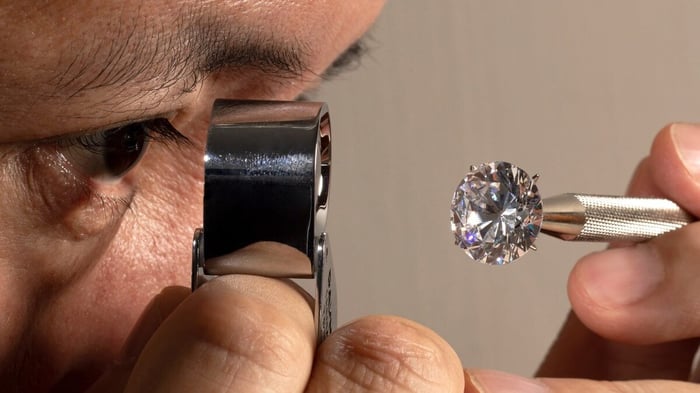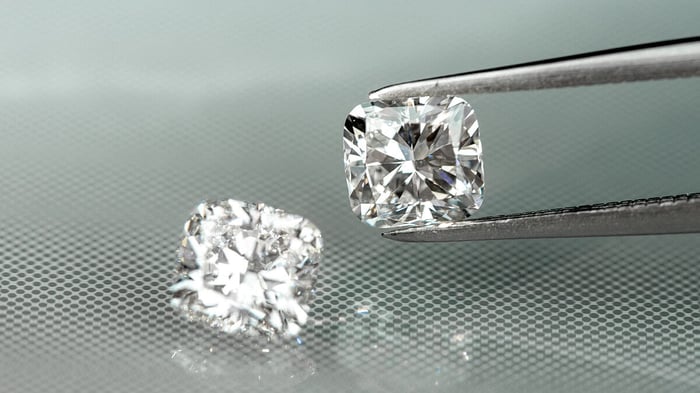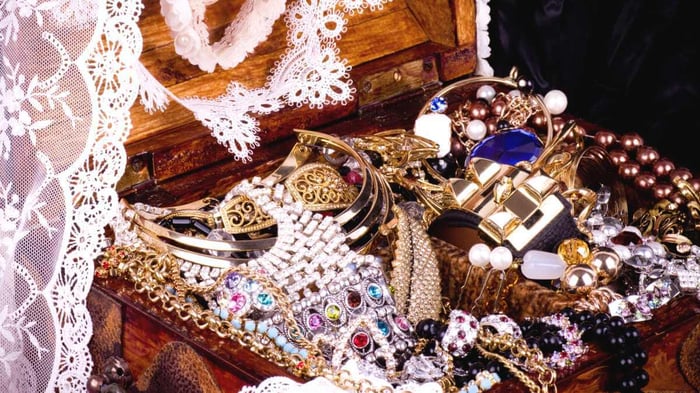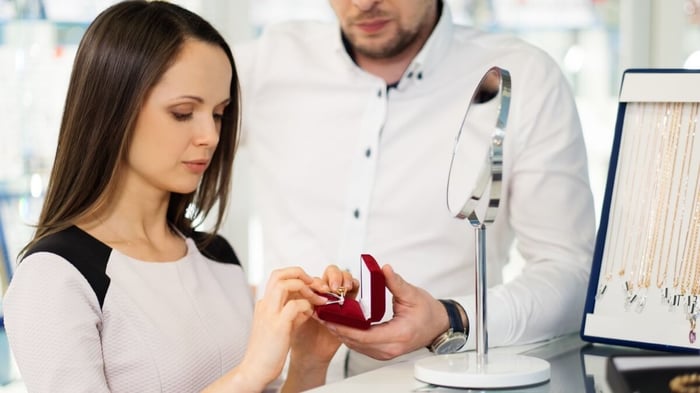Why Is A Diamond Grading Certificate So Important?
The diamond grading certificate is among the more fascinating things about your diamond jewellery. This document can be considered an identity card or passport proving your diamond's identity. Along with the proof of identity, you get much more information, which is helpful as it describes the diamond's physical features, quality and origin.
The diamond grading certificate, often referred to as a diamond grading report, is prepared by expert gemologists working for one of many independent gemological laboratories worldwide. Occasionally these reports are prepared by jewellery vendors. We will not give these further consideration in this article as they are almost always of low quality and valueless as a report on the characteristics and quality of your diamond.
Of the many diamond grading labs, only a few have the respect of the diamond business as a whole. The European Gemological Laboratories (EGL) and the Gemological Institute of America (GIA) are probably the most well-known in The United Kingdom and Europe.
Although a diamond grading certificate is a valuable and helpful document, they are rarely provided for diamonds of less than one carat in size. Some jewellers will offer them for diamonds as small as half a carat, but this is quite rare. The cost and logistics of creating reports for very small diamonds renders reports unfeasible.
No Two Diamonds Are The Same!
Each diamond is unique. This diamond grading is only about how good the diamond is, not how much it's worth. Of course, the report can help you understand the diamond's value better so that you can make an informed choice before you spend your hard-earned money.
The diamond certificate has hand-drawn maps of the position and size of the imperfections, usually referred to as inclusions. Inclusions might be clouds, chips, graining, cavities, cleavages, etc. The diagram serves as a fingerprint of the diamond proving its identity. Just as with fingerprints in humans, the pattern of inclusions is unique to each diamond and cannot be replicated.
What Details Are Recorded On The Certificate?
The first information recorded is the date the grading assessment was carried out. Along with the date the report was created is the Stone ID. This ID is a unique serial number recorded in a global database that enables the diamond to be tracked in the future if the stone is ever resold, lost or stolen.
2.00ct Baguette and Round Cut Claw Set Diamond Cross in 18k White Gold

€3.422,95
Indulge her with a surprise with this sparkling diamond cross pendant. Crafted in 18k white gold, this cross design diamond pendant features channel set baguette diamonds framed by round brilliant micro-set diamonds with a stunning claw set round brilliant cut… read more
Diamond cut and shape
Next, the diamond's cut and shape are recorded. Usually, if the shape is anything other than a standard round brilliant, it will be recorded as a fancy shape. Over 70% of all diamonds used in jewellery are round brilliants.
For round shapes, the sizes are recorded as "largest diameter – smallest diameter x depth." "Length x width x depth" is how all other diamond shapes are recorded.
The diamond's weight
The diamond's weight is given in carats, which is the standard way to measure the weight of gems. One carat is equal to 200 milligrammes.
The diamond's structure
Irregularities in the diamond crystal's structure called grain lines are reported as colourless, white, coloured or reflective.
Angles and measurements
The diamond's angles and measurements, which affect how it looks, are written down. The diamond's optical properties depend on its table size, crown angle, and pavilion depth.
Girdle size
The certificate records how thick the girdle (outside of the diamond) is in relation to the size of the diamond and whether or not the diamond is polished and faceted.
The culet
The bottom point of the stone, called the culet, can be either faceted or not. If the stone has a facet, the facet's size relative to the diamond's size is given.
Finish, polish and symmetry
Next, the grades of the diamond's finish, polish, and symmetry are written down and described using a standard set of grades. These grades are part of the 4Cs (Colour, Clarity. Cut and Carat weight). The 4Cs are universally used in the diamond industry. The GIA devised them early in the 20th century to enable buyers and sellers to understand the quality of a diamond in a standardised format.
Diamond colour
Colour is graded from D (colourless) to Z. (yellow). Colourless diamonds are the rarest and most costly. Most buyers avoid visibly yellow diamonds. We find that a colour grade of 'G' is a sweet spot for colour and value whereby most buyers cannot detect any yellow hue, which means they do not need to pay more for a higher colour-graded diamond, so they save money.
Symmetry
Symmetry is how the stone's facets (surfaces) and finished angles are set up. The report tells you how they did if using the descriptive words excellent, very good, good, fair, or poor.
Diamond cut quality and clarity
The cut quality and clarity of the stone are both written down. Cut quality describes the quality of workmanship used by the artisans who created the facets and polished the diamond's surfaces.
Clarity is the absence of inclusions (blemishes), and it is graded from "flawless" to "included" based on the size, type, position, and number of inclusions.
Pavilion depth
The certificate also lists the pavilion depth, which affects the brilliance. This is the distance from the girdle to the culet.
The perfect ratio
There is also careful documentation of deviations from the Tolkowsky ideal cut. The Tolkowsky ideal cut is a set of proportions that, when thoroughly followed, will maximise light return and brilliance in round-cut diamonds.
Diamond fluorescence
When exposed to ultraviolet light, most diamonds "fluoresce" or turn white, yellow, or blue. Any fluorescence is listed in the report; however, no grade is given for the strength or colour of the effect.
The diagram
Lastly, the certificate has a diagram that gives an idea of the shape and cut of the diamond. It's marked with symbols that tell what kind of clarity characteristic it is, what it looks like, where it is and approximately how big it is.
Laser Engraving Of Diamonds With Grading Certificates
Some of the most reputable diamond grading laboratories use lasers to make almost invisible engravings of information about the diamond. This means even if the diamond becomes separated from its certificate, the gemstone can still be identified and tracked back to its rightful owner if necessary.
Additional Certificate Information
You can expect to find the information above on any certificate from a reputable laboratory. However, some labs provide more information. Some reports will have information about the origin of the diamond, ensuring that it is from a conflict-free source. You may see information that the diamond is of natural or lab-created origin. Some certificates provide information about any treatments used to improve the appearance of the diamond, such as drilling and filling to conceal some types of inclusions.
Not All Diamond Grading Reports Are Equal!
At All Diamond, most of our diamonds are graded by the GIA, which is widely regarded as the gold standard, along with EGR for consistency and accuracy. Although the criteria for grading diamonds are largely standardised, following the work of the GIA and the 4Cs system, the consistency and accuracy of grading can vary from laboratory to laboratory. Some labs tend to give higher grades than others which can give a misleading impression of quality and, thus, the diamond's value.
The Diamond Grading Report Informs You About The Quality Of Your Diamond
While the diamond grading certificate does not mention your diamond's value, the information in the report will enable you to make a value judgement when comparing diamonds. For example, a diamond with a lower colour grade should, all else being equal, cost less money than a higher colour-graded diamond.
When you want to insure your diamond jewellery, the insurer must see the grading report before providing you with insurance coverage.
Certified Shoulder Set Diamond Engagement Ring 0.70ct G/SI in Platinum
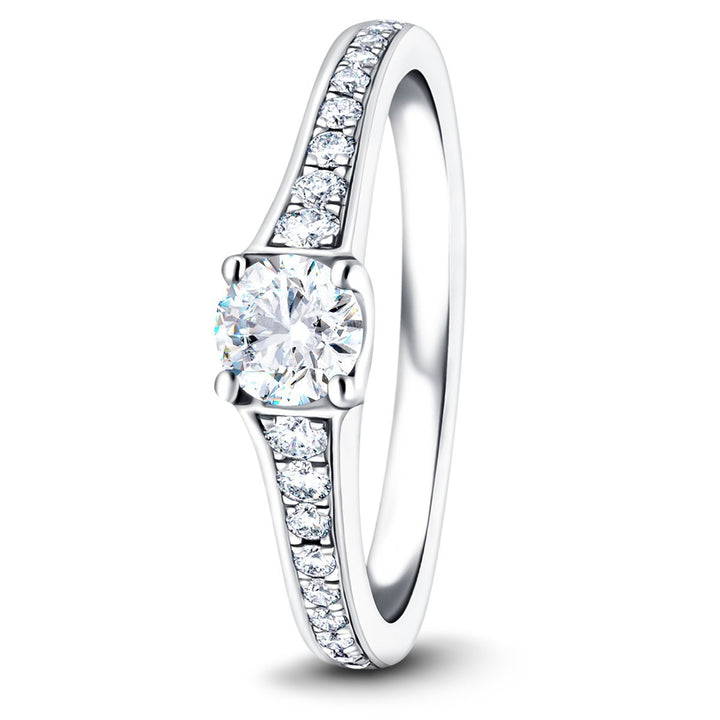
€2.141,95
This beautiful, genuine, and handcrafted diamond ring is the perfect way to express your love. The ring features a clear, brilliant, and G/SI diamond that is set in a genuine platinum band. Whichever style of ring she chooses, it's sure… read more
It is always worth checking with the jewellery seller whether a grading certificate is available. Do not forget that it is rare for small diamonds of less than one carat to have such a certificate.
A final point, although a diamond grading certificate is a useful and valuable aid in making a purchasing decision, in the final analysis, it is you who makes the final decision. Do not rely upon the report to make a choice for you! Buy the diamond and diamond jewellery that you fall in love with – after all, the only person who has to love the diamond jewellery you buy or wear is you!
